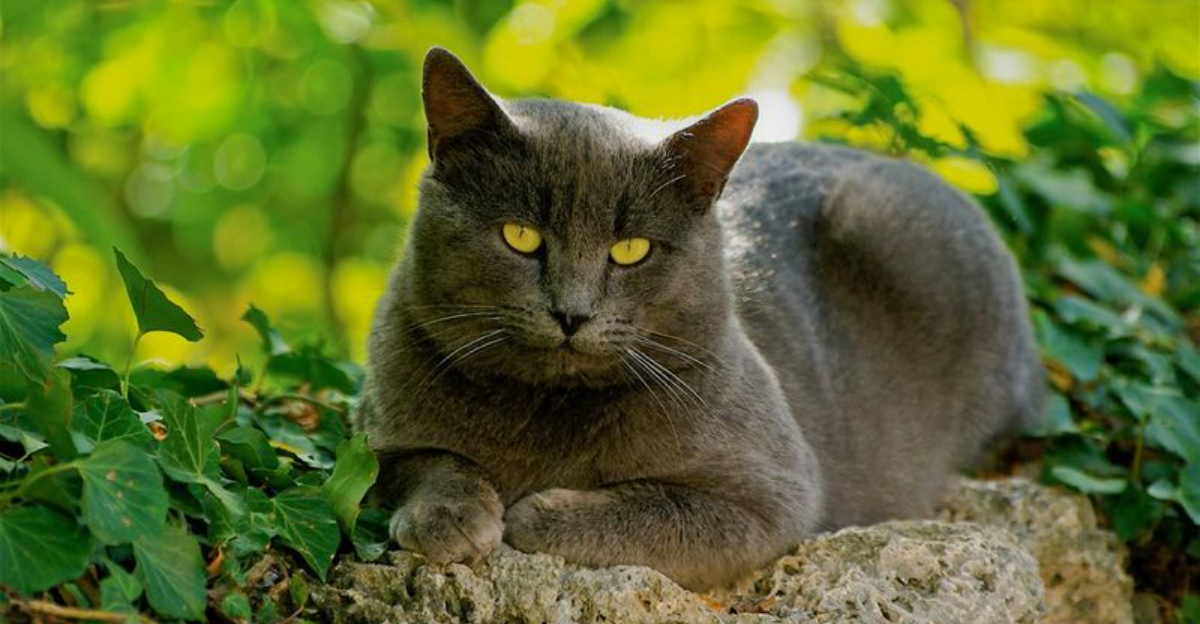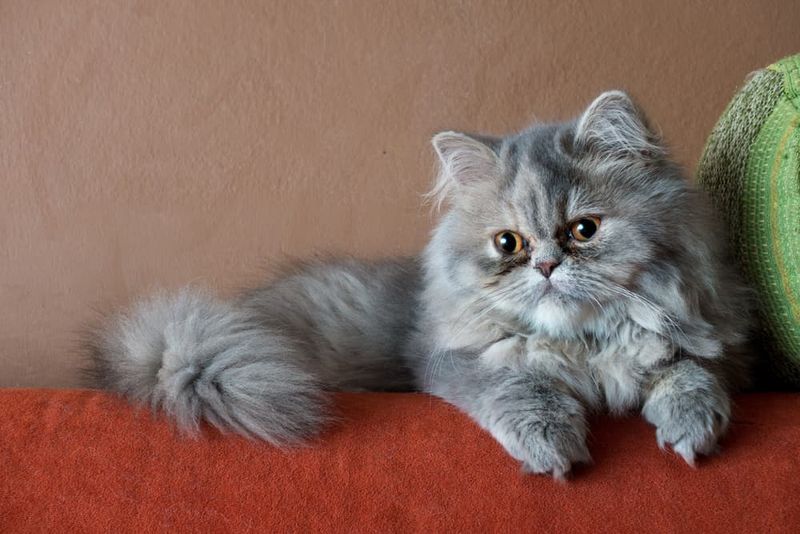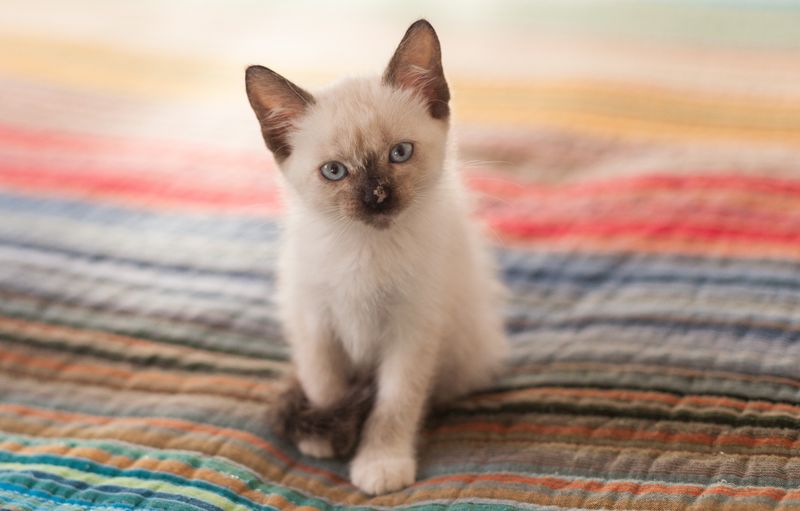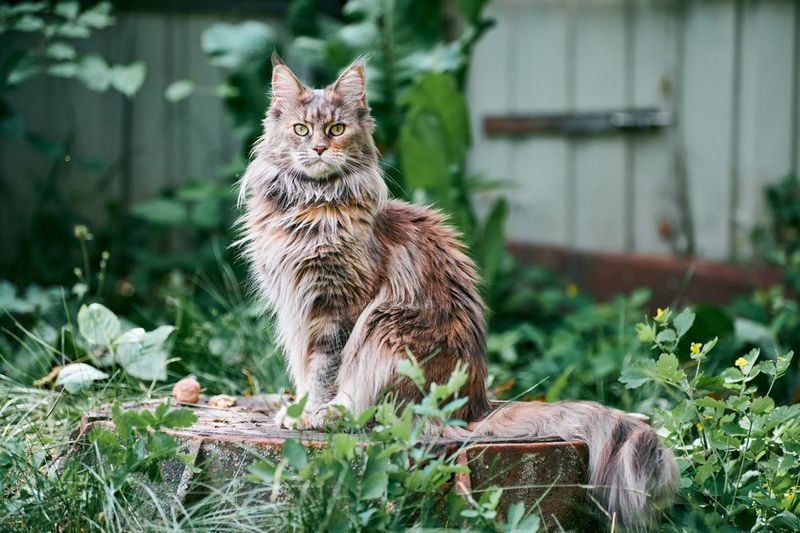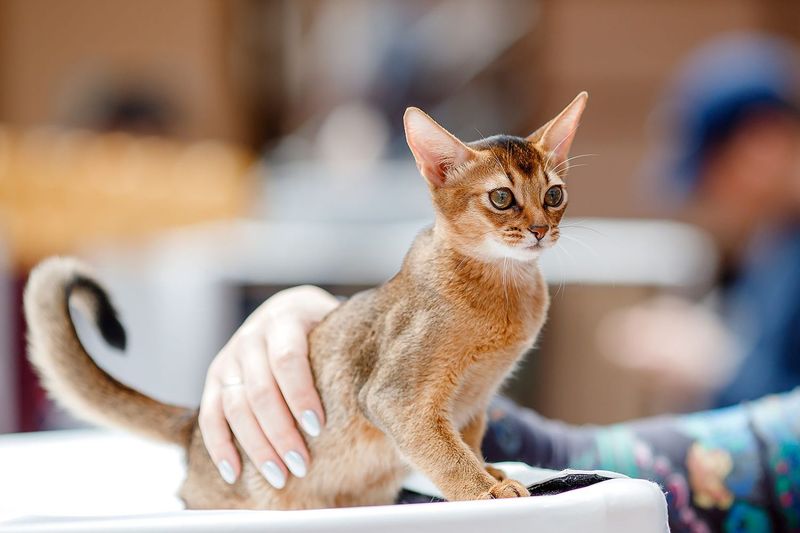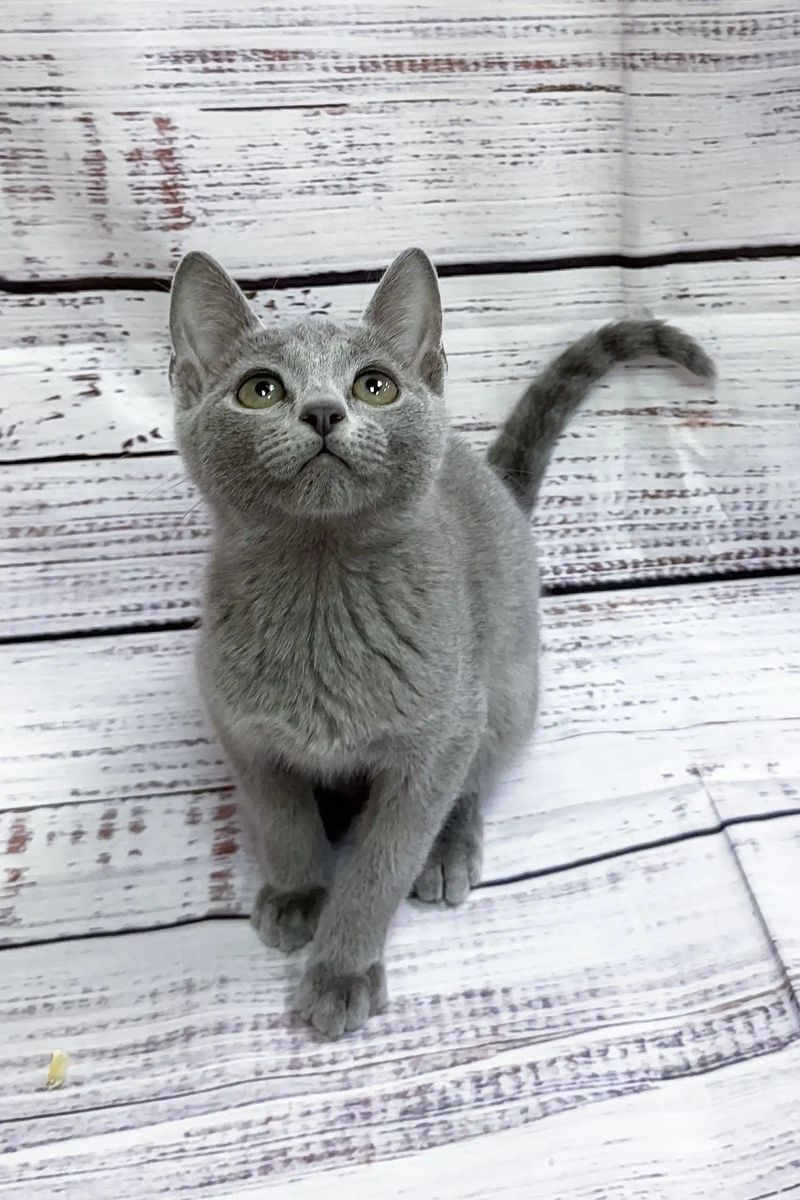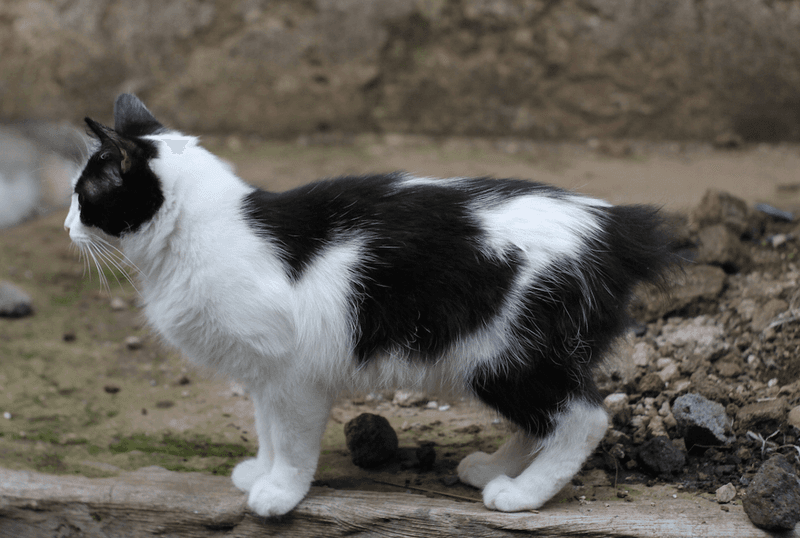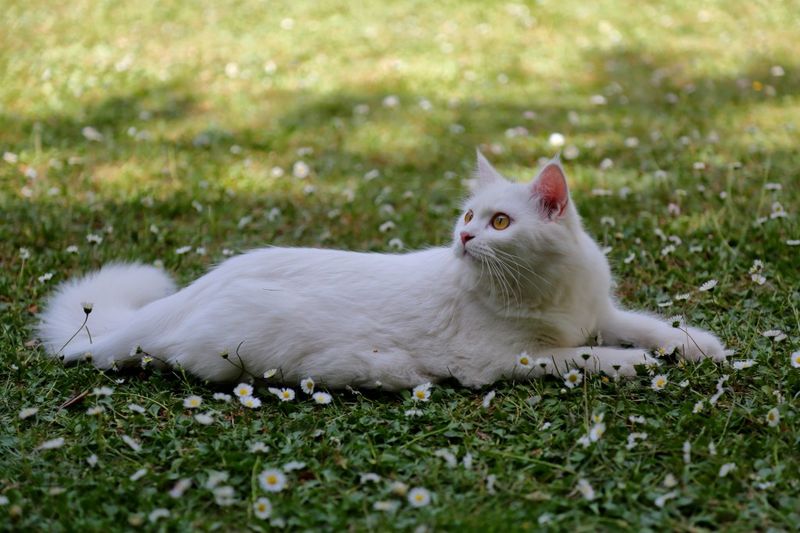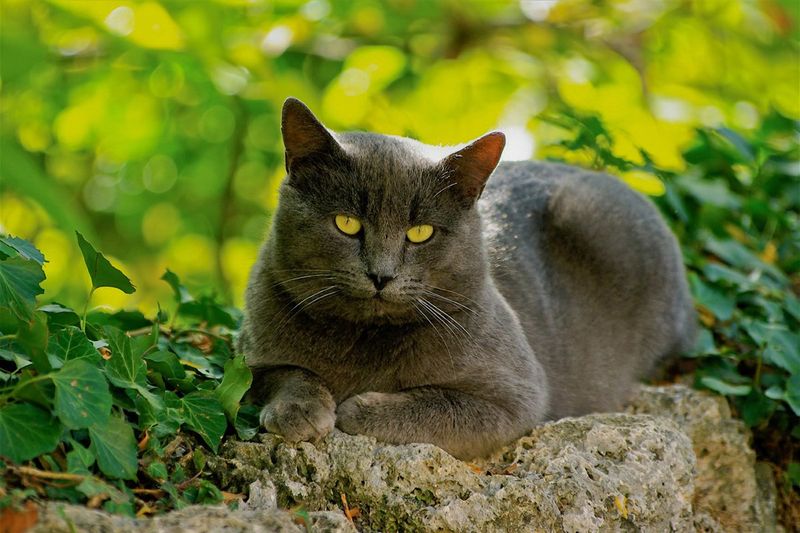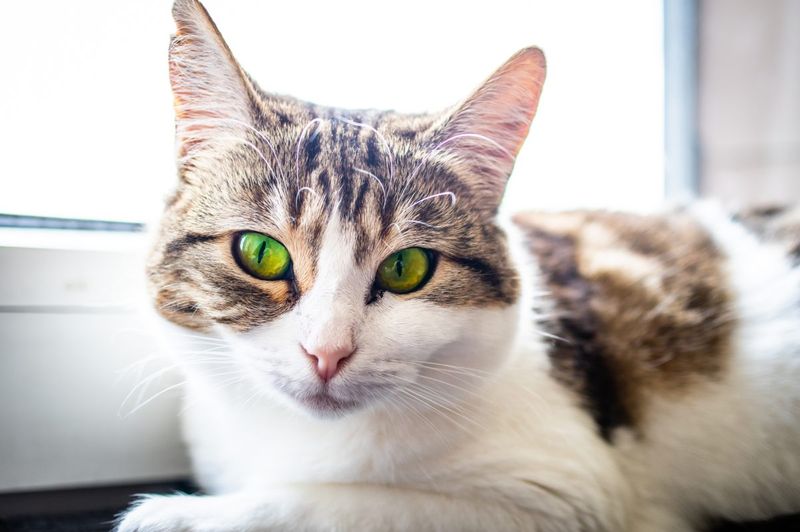📖 Table of Content:
Cat breeds come and go in popularity, but some classic felines have stood the test of time. These traditional cats have maintained their appeal despite newer, trendier breeds appearing on the scene. From working mousers to royal companions, these old-school cats continue to win hearts with their unique traits and historical significance. Let’s meet 10 classic cat breeds that have never gone out of style.
1. Persian
Persians have graced royal courts and elegant homes since the 1600s. Their luxurious coats and distinctive flat faces make them instantly recognizable anywhere in the world.
Despite requiring significant grooming, these laid-back felines remain one of the most beloved breeds. They prefer quiet environments and gentle handling, making them ideal for calm households.
While modern breeders have created extreme facial features in some Persian lines, traditional or “doll-face” Persians maintain their classic look with slightly longer noses and fewer breathing issues.
2. Siamese
Originally from Thailand (formerly Siam), these vocal cats have been charming people for centuries with their striking blue eyes and color-point patterns. Their distinctive appearance has made them stars in films and popular culture.
Siamese cats form deep bonds with their humans and aren’t shy about expressing their opinions through loud, raspy meows. They’re highly intelligent and can learn tricks, play fetch, and even walk on leashes.
The traditional Siamese has a more moderate body type compared to the extremely slender modern show Siamese, but both varieties retain the breed’s famously outgoing personality.
3. Maine Coon
America’s gentle giants have been farm cats in the Northeast since colonial times. Legends claim they descended from Marie Antoinette’s pets or from cats bred with raccoons – though the latter is biologically impossible!
Maine Coons are built for harsh winters with tufted ears, bushy tails, and water-resistant shaggy coats. Their large size is matched by equally large personalities, yet they’re known as “gentle giants” for their sweet temperaments.
Farm families valued these cats for their exceptional mousing abilities. Today, they’re cherished companions who maintain their working cat intelligence and playfulness well into adulthood.
4. Abyssinian
Ancient Egyptian wall paintings depict cats remarkably similar to today’s Abyssinians. Their ticked coat pattern gives them a wild appearance reminiscent of small cougars.
Abyssinians rank among the most active domestic cats. They’re notorious for climbing to the highest point in any room and investigating everything with their paws. Boredom is their enemy – these cats need interactive play and mental stimulation.
Unlike many breeds developed for looks alone, Abyssinians have maintained their athletic build and playful temperament for centuries. Their natural appearance and minimal health issues reflect their status as one of the oldest recognized cat breeds.
5. Russian Blue
Russian sailors reportedly brought these silvery-blue cats from the port of Archangel to Europe in the 1800s. Their plush double coats evolved to withstand northern Russian winters.
Famous for their “Mona Lisa smile” and emerald green eyes, Russian Blues have a reserved elegance that appeals to cat enthusiasts seeking a quiet companion. They typically bond closely with one person while remaining politely aloof with strangers.
Russian Blues nearly disappeared during World Wars I and II but were saved by dedicated breeders. Their naturally low allergen production makes them suitable for some people with mild cat allergies.
6. Manx
Hailing from the Isle of Man, these tailless (or short-tailed) cats have been documented since the 1700s. Their unique trait resulted from a natural genetic mutation that spread throughout the isolated island population.
Manx cats move with a distinctive rabbit-like hop due to their modified spine structure. They’re known for dog-like behaviors such as fetching, burying toys, and forming strong attachments to their families.
Island folklore claims Manx cats lost their tails boarding Noah’s Ark, getting caught in the closing door. The reality is less dramatic but equally interesting – they carry a dominant gene that affects tail development and spinal formation.
7. Turkish Angora
Turkish Angoras have been treasured in their homeland for over a thousand years. Their silky white coats were so prized that they became gifts for European royalty during the 16th century.
These cats are natural athletes with remarkable balance and agility. Many Turkish Angoras enjoy water and may join their owners for a dip in the bathtub or swimming pool – a rare trait among domestic cats.
Though white is the traditional color, Turkish Angoras come in many colors today. The breed almost vanished when they were used to improve Persian coat quality, but Turkey’s Ankara Zoo established a breeding program to save these national treasures.
8. Chartreux
French monastery records mention blue cats resembling today’s Chartreux as early as the 16th century. These cats were valued companions to Carthusian monks and skilled hunters who protected food stores from rodents.
Chartreux cats are famous for their wool-like blue-gray coats and their silent hunting style. They rarely meow, communicating instead through soft chirps and trills. Their round, smiling faces have earned them the nickname “smiling cats of France.”
During World War II, breeders worked hard to save the Chartreux from extinction. Today, these rare cats remain more common in their native France than elsewhere, though their popularity is growing among those who appreciate their quiet strength.
9. Japanese Bobtail
For over a thousand years, Japanese Bobtails have appeared in art, literature, and folklore across Japan. Their distinctive pom-pom tails result from a natural genetic mutation different from that of the Manx.
Japanese Bobtails bring good luck according to tradition. The famous beckoning cat figurine (Maneki Neko) seen in shops and restaurants is based on this breed. Active and intelligent, these cats enjoy learning tricks and playing fetch.
Emperor Ichijo of Japan so treasured these cats that in the 10th century, he decreed they should no longer be kept as pets but allowed to roam freely. This historical protection helped preserve the breed’s natural characteristics.
10. European Shorthair
European Shorthairs developed naturally throughout Europe as working farm cats and skilled hunters. Unlike many breeds created by human intervention, they evolved through natural selection for health, hardiness, and hunting ability.
These cats come in a wide variety of colors and patterns, though the classic tabby is most associated with the breed. They maintain moderate, well-balanced features without the extremes seen in some modern breeds.
European Shorthairs perfectly blend independence with affection. They’re content to spend the day hunting or exploring, then curl up with their families in the evening. Their natural health and adaptability have kept them popular for centuries.
